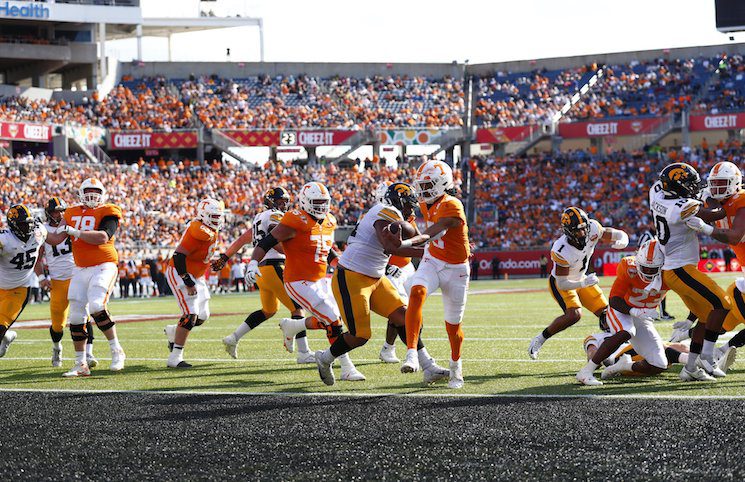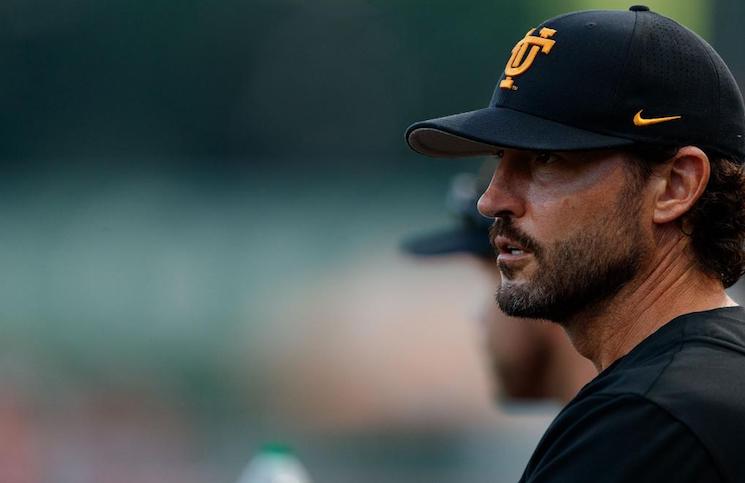
Tennessee’s roster and coaching staff will both look much different this upcoming season from what was on the field last year.
Looking ahead to the 2017 season, I’m going behind the numbers over the next couple of weeks with a series of articles. The focus: next-level statistics. Using efficiency matrices from FootballOutsiders.com and the Fremeau Efficiency Index, we can get to the bottom of UT’s shortcomings last season.
We start on the offensive side of the ball.
Tennessee’s offense was rated as the 28th-most efficient group in college football last season. According to Football Outsiders, offensive efficiency is “The value generated by a team’s offense per non-garbage possession relative to national average scoring rates by starting field position.” Late game blowouts are thrown out and success against bad competition is weighted less than big numbers against conferences foes.
The most efficient offense in the country last season? That would be Navy.
A big statistic that hurt the Vols was their offensive turnover rate. UT’s OTO — The percentage of offensive drives that result in a fumble or interception — was .133, good for 92nd nationally. That means over 10% of UT’s drives ended in a turnover or interception last season.
Heading into 2017, offensive coordinator Larry Scott needs to cut down on his unit’s alarming amount of three-and-outs. The Vols’ ranked 29th in touchdowns after first downs last season. Forty-five percent of the time Tennessee got a first down it scored a touchdown. But moving the chains at least once was a challenge. Of UT’s offensive drives, 72.8 percent resulted in a touchdown or at least one first down, which didn’t rank well. That mark was just 60th in the country.
So how does Larry Scott go about improving those numbers? Do a better job on first and second down.
Tennessee averaged 3.37 yards per play on “passing downs,” which are defined as first down and ten or longer, second and eight or longer, and third and six or longer. Bowling Green, the nation’s leader in passing down yardage, moved the ball an average of 4.29 yards per play in these situations.
When Mike DeBord’s offense put itself in a hole on first and second down, third down didn’t go too well. Naturally, that’s not a radical statement. Poor performance on first and second down is hard for any offense to overcome. But UT’s high turnover rate can be partly explained by passing down failure.
Plus on passing downs, UT allowed a sack 9.3% of the time, ranking UT’s O-line 91st in those scenarios.
One of Tennessee’s most famous plays of 2016 almost didn’t happen because of pressure up the middle:
Jauan Jennings gives the Vols the lead with this incredible catch, and they never look back pic.twitter.com/KCkYaTaoVc
— Rocky Top Insider (@rockytopinsider) September 27, 2016
This kind of protection isn’t going to cut it with a first year QB. Especially not in The Swamp when the Vols travel to play Florida. Tennessee’s three interior linemen all get beat in the play above, and the running back doubles the outside rusher instead of picking up the linebacker up the middle.
It ended up working out because Joshua Dobbs made an accurate throw to a wide open Jauan Jennings, but this passing down was nearly disastrous.
John Kelly will have to increase the Vols’ efficiency on first and second down because Scott has to find a way to take pressure of his first year starting quarterback. Kelly, a strong pass blocker, will have to be smarter than Jalen Hurd was on the above play.
But for the most part, the sabremetrics like the Vols offensive line a lot, ranking that unit tenth in the NCAA overall. On standard downs, with yard lines less than passing downs, Tennessee’s offensive averaged 3.30 yards per play, 19th in the country.
As you can see with this video of Jashon Robertson pancaking a Missouri defensive lineman, when UT runs downhill, the offense is hard to stop.
https://twitter.com/colecubelic/status/877200745728286720
UT’s guards have to get up field quickly. With the technique Butch Jones runs on offense, a lot of pressure is put on the guys in the middle to pull behind the center and open up room in a power concept up the middle.
That responsibility will fall to Robertson and Jack Jones, the projected starters at guard for Tennessee in 2017.
There’s lots to build on for Butch Jones’ offense. Whether Quinten Dormady or Jarrett Guarantano is behind center, the players around UT’s QB all have to be better for the offense to be more efficient this season.



